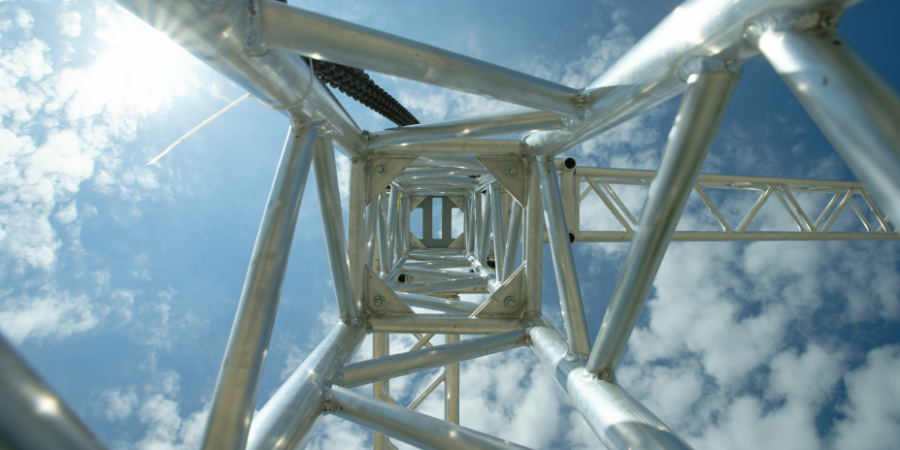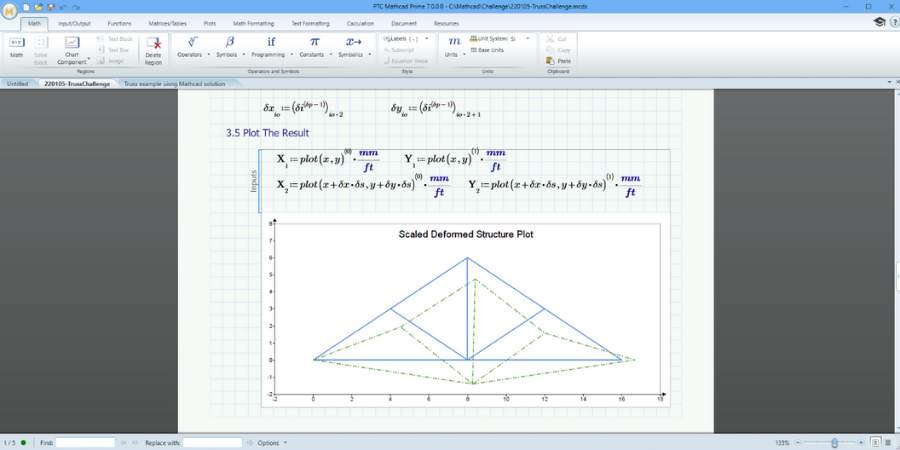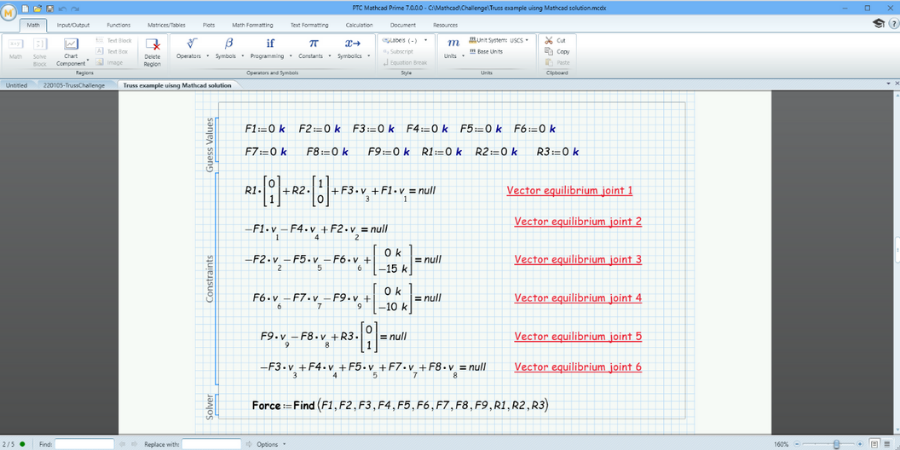
In January 2022, we launched the monthly Mathcad Community Challenge on the PTC Community website. I pulled an old static mechanics problem from my sophomore year in college. I wanted to see how people would solve it today using Mathcad. Before reading the rest of this post, you should visit the link above to read the details of the problem and the two solutions that were submitted.
Like many mechanical engineering problems, there are multiple approaches people can take. Terry Hendicott and Dennis Fallon submitted correct answers using different methods.
Terry and Dennis used the same functionality in both their worksheets:
Terry knocked my socks off by submitting his detailed solution the very next day after the problem was posted. I did not expect anyone to respond that quickly, and as you can see on the community page, his worksheet is thorough.
His solution essentially takes a finite element approach, using vectors and matrices to construct a stiffness matrix and rotation matrix. Incorporating the constraints and forces allows solving for the deflections. Knowing those values, you can “back out” the individual member forces. This is a vast oversimplification of Terry’s math. I recommend you look for yourself so you can see the power of matrix math for structural analysis.
Based on the response of another user, Terry incorporated the new Mathcad Prime 7.0 enhancement called the Combo Box. It allows for the solution to be changed based on the material of the truss.
My favorite part of Terry’s worksheet was the creation of a custom plotting program that he used in conjunction with the Chart Component to show the truss in both the original and undeformed shapes.

Dennis solved the problem using equilibrium of forces at the joints and a Solve Block to calculate the forces in the 9 members and the 3 reaction forces. Knowing the forces in each member allows calculation of the stress. The change in length is then calculated via the stress, Young’s modulus, and initial length. Then he calculated the deflection at the middle using the virtual work principle. Very elegant.
He also used a tool that I’ve never used: the table. It’s a way of defining datasets that creates column vectors. My favorite part was the use of the Solve Block. I am a huge fan of that construct, which can be used for solving systems of equations as well as optimizing.

Dennis is the founding dean of the School of Engineering at The Citadel. You can tell his experience as an educator via the apparent simplicity of the solution. I use the word “apparent” because it incorporates fundamental concepts of statics in a way that students can understand and apply for themselves.
In an email to me, Dennis stated that his goal was “to make this more of a learning tool than an actual structural analysis.” I commend that intent. The numerical answers were not the important part of the challenge; the solution approach is.
Both Terry’s and Dennis’s solutions demonstrate the tools in Mathcad that can be used to solve engineering problems, including variables, units, functions, matrices, Solve Blocks, and Chart Components. They complement the math tools with documentation via text and images. Students and engineering professionals can learn a lot from their solutions.
Stay tuned for the next Mathcad Challenge, which will be posted soon! Be sure to create an account at PTC Community if you haven’t already and subscribe to the challenge index and guidelines.
Perform, analyze, document, and share your calculations starting now!